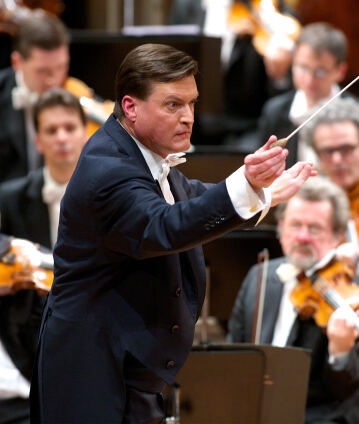Christian Thielemann conducts Bruckner’s Eighth Symphony

Bruckner’s symphonies convey the ideas of trust in God and the certainty of faith like few other orchestral works. The fact that these compositions also reflect extremely personal psychological dramas can be heard vividly, particularly in the Eighth. The conductor of this performance is Christian Thielemann, about whom the press wrote that he made “the symphony resound relentlessly: its echo of thunder, its terrifying whispers, its general pauses of reflection”.
Like many of his contemporaries, Hugo Wolf was also overwhelmed when Bruckner’s Eighth Symphony was premiered in Vienna on 18 December 1892: “This symphony is the creation of a giant and surpasses all the master’s other symphonies in spiritual dimension, richness and greatness.”
The greatness attested to by Wolf is shown in many ways – first in its length, which puts all other works by Bruckner in the shade. In addition, the composer achieves a unique emotional power, such as in in the slow movement where themes of changing moods – we can hear doubt, sadness and warm comfort – intertwine, building up great intensity of expression.
Bruckner’s inspiration is also rich and varied. He himself claimed to use both the emotional and sound worlds of Richard Wagner in the first movement, in particular the Todesverkündigung, the “annunciation of death” from his Valkyrie and the monologue of the Flying Dutchman. In the finale on the other hand, there are echoes of a historical meeting of the Austrian Emperor and the Russian czar, for example in a “Ride of the Cossacks” in the string accompaniment at the beginning of the movement. Despite its multifaceted and well-calculated contrasting nature, the music is not fractured: Rather, it is firmly bound together by the ever-present personality of the composer, which ensures that the symphony maintains a never-diminishing intensity.
© 2008 Berlin Phil Media GmbH
Artists
Our recommendations
- Christian Thielemann and Camilla Nylund with Strauss
- Chopin’s Piano Concerto No. 1 with Maurizio Pollini and Christian Thielemann
- Christian Thielemann and Albrecht Mayer with works by Strauss and Bruckner
- Unfamiliar Bruckner with Christian Thielemann
- Beethoven and Bruckner with Christian Thielemann and Rudolf Buchbinder
- Christian Thielemann conducts Beethoven’s “Eroica”